|
|
||
|
|
||
|
Privacy Policy | Editorial Policy | Profit Policy | Join the Association | List of Members | Contact us | Index | Links |
||
|
Back Go to page: 1 2 3 4 5 6 7 8 9 10 11 12 13 14 15 16 17 18 19 20 Forward |
||
|
|
||
|
Information Overload!!
These
days our brains are busier than ever before. We’re assaulted with
facts, pseudo facts, jibber-jabber and rumour, all posing as
information.
Our
smartphones have become Swiss army knife–like appliances that
include a dictionary, calculator, web browser, email, appointment
calendar, voice recorder, guitar tuner, weather forecaster, GPS,
texter, tweeter, Facebook updater, and flashlight. They’re more
powerf
But there’s a fly in the ointment. Although we think we’re doing several things at once, multitasking, this is a powerful and diabolical illusion. Earl Miller, a neuroscientist at MIT and one of the world experts on divided attention, says that our brains are “not wired to multitask well… When people think they’re multitasking, they’re actually just switching from one task to another very rapidly. And every time they do, there’s a cognitive cost in doing so.” So we’re not actually keeping a lot of balls in the air like an expert juggler; we’re more like a bad amateur plate spinner, frantically switching from one task to another, ignoring the one that is not right in front of us but worried it will come crashing down any minute. Even though we think we’re getting a lot done, ironically, multitasking makes us demonstrably less efficient.
Multitasking has been
found to increase the production of the stress hormone cortisol as
well as the fight-or-flight hormone adrenaline, which can
overstimulate your brain and cause mental fog or scrambled thinking.
Multitasking creates a dopamine-addiction feedback loop,
In the old days, if the
phone rang and we were busy, we either didn’t answer or we turned
the ringer off. When all phones were wired to a wall, there was no
expectation of being able to reach us at all times – one might have
gone out for a walk or been between places – and so if someone
couldn’t reach you (or you didn’t feel like being reached), it was
considered normal. Now more people have mobile phones than have
toilets. This has created an implicit expectation that you should be
able to reach someone when it is convenient for you, regardless of
whether it is convenient for them. This expectation is so ingrained
that people in meetings routinely answer their mobile phones to say,
“I’m sorry, I
Just having the opportunity to multitask is detrimental to cognitive performance. Glenn Wilson, former visiting professor of psychology at Gresham College, London, calls it info-mania. His research found that being in a situation where you are trying to concentrate on a task and an email is sitting unread in your inbox, can reduce your effective IQ by 10 points. And although people ascribe many benefits to marijuana, including enhanced creativity and reduced pain and stress, it is well documented that its chief ingredient, cannabinol, activates dedicated cannabinol receptors in the brain and interferes profoundly with memory and with our ability to concentrate on several things at once. Wilson showed that the cognitive losses from multitasking are even greater than the cognitive losses from pot‑smoking.
Russ Poldrack, a
neuroscientist at Stanford, found that learning information while
multitasking causes the new information to go to the wrong part of
the brain. If students study and watch TV at the same time, for
example, the information from their schoolwork goes into the
striatum, a region specialised for storing new procedures and
skills, not facts and ideas. Without the distraction of TV, the
information goes into the hippocampus, where it is organised and
categorised in a variety of ways, making it easier to retrieve.
MIT’s Earl Miller adds, “People can’t do [multitasking] very well,
and when they say they can, they’re deluding themselves.” And it
turns out the brain is very good at this deluding
Asking the brain to shift attention from one activity to another causes the prefrontal cortex and striatum to burn up oxygenated glucose, the same fuel they need to stay on task.
The kind of rapid, continual shifting we do with multitasking causes the brain to burn through fuel so quickly that we feel exhausted and disoriented after even a short time. We’ve literally depleted the nutrients in our brain. This leads to compromises in both cognitive and physical performance. Among other things, repeated task switching leads to anxiety, which raises levels of the stress hormone cortisol in the brain, which in turn can lead to aggressive and impulsive behaviour. By contrast, staying on task is controlled by the anterior cingulate and the striatum, and once we engage the central executive mode, staying in that state uses less energy than multitasking and actually reduces the brain’s need for glucose.
To make matters worse, lots of multitasking requires decision-making: Do I answer this text message or ignore it? How do I respond to this? How do I file this email? Do I continue what I’m working on now or take a break? It turns out that decision-making is also very hard on your neural resources and that little decisions appear to take up as much energy as big ones. One of the first things we lose is impulse control. This rapidly spirals into a depleted state in which, after making lots of insignificant decisions, we can end up making truly bad decisions about something important. Why would anyone want to add to their daily weight of information processing by trying to multitask?
In discussing information overload with Fortune 500 leaders, top scientists, writers, students, and small business owners, email comes up again and again as a problem. It’s not a philosophical objection to email itself, it’s the mind-numbing number of emails that come in. Workers in government, the arts, and industry report that the sheer volume of email they receive is overwhelming, taking a huge bite out of their day. We feel obliged to answer our emails, but it seems impossible to do so and get anything else done.
Before email, if you wanted to write to someone, you had to invest some effort in it. You’d sit down with pen and paper, or at a typewriter, and carefully compose a message. There wasn’t anything about the medium that lent itself to dashing off quick notes without giving them much thought, partly because of the ritual involved, and the time it took to write a note, find and address an envelope, add postage, and take the letter to a mailbox. Because the very act of writing a note or letter to someone took this many steps, and was spread out over time, we didn’t go to the trouble unless we had something important to say. Because of email’s immediacy, most of us give little thought to typing up any little thing that pops in our heads and hitting the send button. And email doesn’t cost anything.
Sure, there’s the money
you paid for your computer and your internet connection, but there
is no incremental cost to sending one more email.
There are also important differences between snail mail and email on the receiving end. In the old days, the only mail we got came once a day, which effectively created a cordoned-off section of your day to collect it from the mailbox and sort it. Most importantly, because it took a few days to arrive, there was no expectation that you would act on it immediately. If you were engaged in another activity, you’d simply let the mail sit in the box outside or on your desk until you were ready to deal with it. Now email arrives continuously, and most emails demand some sort of action: Click on this link to see a video of a baby panda, or answer this query from a co-worker, or make plans for lunch with a friend, or delete this email as spam. All this activity gives us a sense that we’re getting things done – and in some cases we are. But we are sacrificing efficiency and deep concentration when we interrupt our priority activities with email.
Until recently, each of the many different modes of communication we used signalled its relevance, importance, and intent. If a loved one communicated with you via a poem or a song, even before the message was apparent, you had a reason to assume something about the nature of the content and its emotional value. If that same loved one communicated instead via a summons, delivered by an officer of the court, you would have expected a different message before even reading the document. Similarly, phone calls were typically used to transact different business from that of telegrams or business letters. The medium was a clue to the message. All of that has changed with email and this is one of its overlooked disadvantages – because it is used for everything. In the old days, you might sort all of your postal mail into two piles, roughly corresponding to personal letters and bills. If you were a corporate manager with a busy schedule, you might similarly sort your telephone messages for call-backs. But emails are used for all of life’s messages. We compulsively check our email in part because we don’t know whether the next message will be for leisure/amusement, an overdue bill, a “to do”, a query… something you can do now, later, something life-changing, something irrelevant.
This uncertainty wreaks
havoc with our rapid perceptual categorisation system, causes
stress, and leads to decision overload. Every email requires a
decision! Do I respond to it? If so, now or later? How important is
it? What will be the social, economic, or job-related consequences
if I don’t answer, or if I don’t answer right now?
Because it is limited in characters, texting discourages thoughtful discussion or any level of detail and its addictive problems are compounded by its hyper-immediacy.
Now of course email is approaching obsolescence as a communicative medium. Most people under the age of 30 think of email as an outdated mode of communication used only by “old people”. In its place they text, and some still post to Facebook. They attach documents, photos, videos, and links to their text messages and Facebook posts the way people over 30 do with email. Many people under 20 now see Facebook as a medium for the older generation.
For them, texting has become the primary mode of communication. It offers privacy that you don’t get with phone calls, and immediacy you don’t get with email. Crisis hotlines have begun accepting calls from at-risk youth via texting and it allows them two big advantages: they can deal with more than one person at a time, and they can pass the conversation on to an expert, if needed, without interrupting the conversation.
But texting suffers from most of the problems of email and then some. Because it is limited in characters, it discourages thoughtful discussion or any level of detail. And the addictive problems are compounded by texting’s hyperimmediacy. Emails take some time to work their way through the internet and they require that you take the step of explicitly opening them. Text messages magically appear on the screen of your phone and demand immediate attention from you. Add to that the social expectation that an unanswered text feels insulting to the sender, and you’ve got a recipe for addiction: you receive a text, and that activates your novelty centres. You respond and feel rewarded for having completed a task (even though that task was entirely unknown to you 15 seconds earlier). Each of those delivers a shot of dopamine as your limbic system cries out “More! More! Give me more!”
In a famous experiment, Peter Milner and James Olds, both neuroscientists, placed a small electrode in the brains of rats, in a small structure of the limbic system called the nucleus accumbens.
This structure
regulates dopamine production and is the region that “lights up”
when gamblers win a bet, drug addicts take cocaine, or people have
orgasms – Olds and Milner called it the pleasure centre. A lever in
the cage allowed the rats to send a small electrical signal directly
to their nucleus accumbens. Do you think they liked it? Boy how they
did! They
Each time we dispatch an email in one way or another, we feel a sense of accomplishment, and our brain gets a dollop of reward hormones telling us we accomplished something. Each time we check a Twitter feed or Facebook update, we encounter something novel and feel more connected socially (in a kind of weird, impersonal cyber way) and get another dollop of reward hormones. But remember, it is the dumb, novelty-seeking portion of the brain driving the limbic system that induces this feeling of pleasure, not the planning, scheduling, higher-level thought centres in the prefrontal cortex. Make no mistake: email, Facebook and Twitter checking constitute a neural addiction.
|
||
|
Recycling day should be renamed, 'See who’s an alcoholic in the street' day.
|
||
|
Exercise
If you have a condition that would benefit from regular exercise, such as PTSD, diabetes, hypertension, obesity, osteoarthritis, chronic pain, back pain, cardiovascular disease or perhaps you have had heart troubles, or joint replacement surgery or have suffered muscular injuries and you are an entitled person as per the DVA conditions HERE, then the first thing you should do is find a suitable venue where you can be treated. When you have found a venue that is comfortable to you, see your Medical Provider and obtain the referral. Remember, DVA does not pay for general gym programs, you will only be treated for the condition(s) mentioned in the referral and the person providing the treatment must be a University Accredited and nationally recognised Exercise Physiologist (EP), who must be present for the entire treatment session.
If you live in Queensland, one such provider we can suggest is a group called Active Body Conditioning which operates from a number of Gyms. Currently they provide health care at Goodna, Enoggera, Cairns, Rockhampton, Gladstone and will soon have facilities on the Gold Coast and at Bundaberg. If you live on the northern side of Brisbane, they operate from the Anytime Fitness Gym on the corner of Samford and Enoggera Rds, Enoggera (below), not far from the Gallipoli Army Barracks.
Cameron Wilson looks after the troops at the Enoggera Gym. He will design a program for you and have you climbing mountains in no time.
Active Body Conditioning (ABC) was established in January 2012 with the aim of providing a personal, safe and warm environment for exercise and to assist in fighting the battle of chronic disease and disability. ABC’s Exercise Physiologists provide specialised interventions through exercise testing, health and physical activity education and extensive knowledge. They also provide advice, support, and prescription for management of chronic disease, injury specific, musculo-skeletal, neurological and cardiac rehabilitation as well as personal training for general health and well-being.
If you could benefit from some exercise, and you’re entitled to DVA benefits, don’t put it off any longer, make the New Year’s resolution and start to enjoy life again.
If you could do with a bit of a work-out, give them a ring, (0401 857 859) it could be the smartest thing you do this year.
|
||
|
Walking: Trim your waistline, improve your health.
Can you really walk your way to fitness? You bet you can! Get started today.
Know the benefits!
Physical activity doesn't need to be complicated. Something as simple as a daily brisk walk can help you live a healthier life. For example, regular brisk walking can help you:
The faster, farther and more frequently you walk, the greater the benefits.
Consider your technique!
Turning your normal walk into a fitness stride requires good posture
and purposeful movements. Ideally, here's how you'll look when
you're walking:
Plan your routine!
As you start your walking routine, remember to:
Set realistic goals!
For most healthy adults, it is recommended that you have at least two hours and 30 minutes a week of moderate aerobic activity or one hour and 15 minutes a week of vigorous aerobic activity — preferably spread throughout the week — and strength training exercises at least twice a week.
As a general goal, aim for at least 30 minutes of physical activity a day. If you can't set aside that much time, try two 15-minute sessions or three 10-minute sessions throughout the day. Remember, though, it's OK to start slowly — especially if you haven't been exercising regularly. You might start with five minutes a day the first week, and then increase your time by five minutes each week until you reach at least 30 minutes.
Track your progress!
Keeping a record of how many steps you take, the distance you walk
and how long it takes can help you see where you started from and
serve as a source of inspiration. Just think how good you'll feel
when you see how many miles you've walked each week, month or year.
Record these
Stay motivated!
Starting a walking program takes initiative. Sticking with it takes commitment. To stay motivated:
Once you take that first step, you're on the way to an important destination — better health.
|
||
|
A husband feared his wife wasn't hearing as well as she used to, and he thought she might need a hearing aid. Not quite sure how to approach her, he called the family doctor to discuss the problem. The doctor told him there is a simple informal test the husband could perform to give the doctor a better idea about her hearing loss. "Here's what you do," said the Doctor. "Stand about 40 feet away from her and in a normal conversational speaking tone, see if she hears you. If not, go to 30 feet, then 20 feet, and so on until you get a response." That evening, the wife is in the kitchen cooking dinner, and the husband was in the den. He says to himself, "I'm about 40 feet away, let's see what happens." Then in a normal tone he asks, "Honey, what's for dinner?" No response. So the husband moves closer to the kitchen, about 30 feet from his wife and repeats, "Honey, what's for dinner?" Still no response. Next he moves into the dining room where he is about 20 feet from his wife and asks, "Honey, what's for dinner?" Again he gets no response. So, he walks up to the kitchen door, about 10 feet away. "Honey, what's for dinner?" Again there is no response. So he walks right up behind her. "Honey, what's for dinner? " "Ralph, for the FIFTH time, CHICKEN!"
|
||
|
Alcohol use: If you drink, keep it moderate.
Alcohol use can be a slippery slope. Moderate drinking can offer some health benefits, but heavy drinking can have serious consequences. It sounds like a mixed message, although drinking alcohol may offer some health benefits, especially for your heart, on the other hand, alcohol may increase your risk of health problems and damage your heart. So which is it?
When it comes to drinking alcohol, the key is doing so only in moderation. Certainly, you don't have to drink any alcohol and if you currently don't drink, don't start drinking for the possible health benefits. In some cases, it's safest to avoid alcohol entirely — the possible benefits don't outweigh the risks.
Here's a closer look at the connection between alcohol and your health.
Health benefits of moderate alcohol use!
Moderate alcohol consumption may provide some health benefits. It may:
Even so, the evidence about the possible health benefits of alcohol isn't certain, and alcohol may not benefit everyone who drinks.
Guidelines for moderate alcohol use!
If you choose to drink alcohol, do so only in moderation. For healthy adults, that means up to one drink a day for women of all ages and men older than age 65, and up to two drinks a day for men age 65 and younger.
Examples of one drink include:
Moderate alcohol use may be of most benefit if you're an older adult or if you have existing risk factors for heart disease. If you're a middle-aged or younger adult, some evidence shows that even moderate alcohol use may cause more harm than good. You can take other steps to benefit your cardiovascular health besides drinking — eating a healthy diet and exercising, for example.
When to avoid alcohol use!
In
certain situations, the risks of alcohol use may outweigh the
possible health benefits. For example, use alcohol only with great
care and after consulting your doctor if:
The risks of heavy alcohol use!
It doesn’t sound like a lot but heavy drinking is defined as more than three drinks on any day or more than seven drinks a week for women and for men older than age 65, and more than four drinks on any day or more than 14 drinks a week for men age 65 and younger. Binge drinking is defined as four or more drinks within two hours for women and five or more drinks within two hours for men.
While moderate alcohol use may offer some health benefits, heavy drinking — including binge drinking — has no health benefits. Excessive drinking can increase your risk of serious health problems, including:
Drink alcohol only in moderation — or not at all.
The latest dietary guidelines make it clear that no one should begin drinking or drink more frequently on the basis of potential health benefits. So don't feel pressured to drink alcohol. If you do drink alcohol and you're healthy, there's probably no need to stop as long as you drink responsibly and in moderation.
|
||
|
Everyone thinks I'm a hypochondriac – it makes me sick.
|
||
|
Halal
There has been, and there will continue to be, a lot of discussion on the promotion of Halal products – what’s it all about??
Halal is an Arabic word meaning lawful or permitted. In reference to food, it is the dietary standard, as prescribed in the Koran (the Muslim scripture). The opposite of halal is haram, which means unlawful or prohibited. Halal and haram are universal terms that apply to all facets of life. These terms are commonly used in relation to food products, meat products, cosmetics, personal care products, pharmaceuticals, food ingredients, and food contact materials.
In general every food is considered halal in Islam unless it is specially prohibited by the Koran. By official definition, halal foods are those that are:
Muslims eat to maintain a strong and healthy physique in order to be
able
All foods are considered halal except the following (which are haram):
Foods containing ingredients such as gelatin, enzymes, emulsifiers, and flavours are questionable, because the origin of these ingredients is not known. In the meat and poultry food industry, animals such as cows, veal, lamb, sheep, goats, turkeys, chickens, ducks, game birds, bison, venison, etc, are considered halal, but they must be prepared according to Islamic laws in order for their meat to be suitable for consumption.
Fish and seafood (with the exception of crocodiles, alligators and frogs) are generally acceptable for Muslims. The preparation of the fish or seafood should not include alcohol (ie batter or wine, or anything considered haram).
In cases of necessity, prohibited things may become permissible (halal) for the duration of the emergency or need, as Islam puts a priority on life over death.
Halal describes what is lawful for Muslims to eat. Halal food laws are based on an interpretation of the Koran and sets out the range of beverages and foods (including meat) that are acceptable for Muslims to eat. The procedures for Halal slaughter can vary from place to place because of the differing interpretations, this is how the interpretation is accepted in Australia.
The main concern with halal slaughter is whether
or not pre-slaughter stunning is used. In Australia, the national
standard for meat production requires that all animals must be
effectively stunned (unconscious) prior to slaughter. The vast
majority of halal slaughter in Australia (including at export
abattoirs) complies with this standard, that is, all animals are
stunned prior to slaughter. The only difference is that a reversible
stunning method is used, while conventional humane slaughter may use
an irreversible stunning method. The time to regain consciousness
following a reversible stun may vary depending on the intensity of
the
Halal slaughter in overseas abattoirs often does not include stunning - this is the key difference between halal slaughter in Australia and many other countries. Although reversible stunning is far better from an animal welfare perspective than no stunning at all, irreversible stunning is more effective in inducing unconsciousness than reversible stunning and is therefore the preferred method.
In Australia, products that have been certified as Halal wear the Halal Australia symbol.
You can see all the companies that have their products Halel certified for sale in Australia HERE.
|
||
|
A natural death is where you die by yourself without the aid of a doctor.
|
||
|
|
||
|
|
||
|
|
||
|
Back Go to page: 1 2 3 4 5 6 7 8 9 10 11 12 13 14 15 16 17 18 19 20 Forward |

 Trying to figure out what you need to know and what you can ignore
is exhausting. At the same time, we are all doing more. Thirty years
ago, travel agents made our airline and rail reservations,
salespeople helped us find what we were looking for in shops, and
professional typists or secretaries helped busy people with their
correspondence. Now we do most of those things ourselves. We are
doing the jobs of 10 different people while still trying to keep up
with our lives, our children and parents, our friends, our careers,
our hobbies, and our favourite TV shows.
Trying to figure out what you need to know and what you can ignore
is exhausting. At the same time, we are all doing more. Thirty years
ago, travel agents made our airline and rail reservations,
salespeople helped us find what we were looking for in shops, and
professional typists or secretaries helped busy people with their
correspondence. Now we do most of those things ourselves. We are
doing the jobs of 10 different people while still trying to keep up
with our lives, our children and parents, our friends, our careers,
our hobbies, and our favourite TV shows. ul
and do more things than the most advanced computer at IBM corporate
headquarters 30 years ago could do. And we use them all the time,
they are part of the 21st-century mania for cramming everything we
do into every single spare moment of downtime. We text while we’re
walking across the street, catch up on email while standing in a
queue – and while having lunch with friends, we surreptitiously
check to see what our other friends are doing. At the kitchen
counter, cosy and secure in our domicile, we write our shopping
lists on smartphones while we are listening to that wonderfully
informative podcast on urban beekeeping.
ul
and do more things than the most advanced computer at IBM corporate
headquarters 30 years ago could do. And we use them all the time,
they are part of the 21st-century mania for cramming everything we
do into every single spare moment of downtime. We text while we’re
walking across the street, catch up on email while standing in a
queue – and while having lunch with friends, we surreptitiously
check to see what our other friends are doing. At the kitchen
counter, cosy and secure in our domicile, we write our shopping
lists on smartphones while we are listening to that wonderfully
informative podcast on urban beekeeping. effectively rewarding the brain for losing focus and for constantly
searching for external stimulation. To make matters worse, the
prefrontal cortex has a novelty bias, meaning that its attention can
be easily hijacked by something new – the proverbial shiny objects
we use to entice infants, puppies, and kittens. The irony here for
those of us who are trying to focus amid competing activities is
clear: the very brain region we need to rely on for staying on task
is easily distracted. We answer the phone, look up something on the
internet, check our email, send an SMS, and each of these things
tweaks the novelty-seeking, reward-seeking centres of the brain,
causing a burst of endogenous opioids (no wonder it feels so good!,
all to the detriment of our staying on task. It is the ultimate
empty-caloried brain candy. Instead of reaping the big rewards that
come from sustained, focused effort, we instead reap empty rewards
from completing a thousand little sugar-coated tasks.
effectively rewarding the brain for losing focus and for constantly
searching for external stimulation. To make matters worse, the
prefrontal cortex has a novelty bias, meaning that its attention can
be easily hijacked by something new – the proverbial shiny objects
we use to entice infants, puppies, and kittens. The irony here for
those of us who are trying to focus amid competing activities is
clear: the very brain region we need to rely on for staying on task
is easily distracted. We answer the phone, look up something on the
internet, check our email, send an SMS, and each of these things
tweaks the novelty-seeking, reward-seeking centres of the brain,
causing a burst of endogenous opioids (no wonder it feels so good!,
all to the detriment of our staying on task. It is the ultimate
empty-caloried brain candy. Instead of reaping the big rewards that
come from sustained, focused effort, we instead reap empty rewards
from completing a thousand little sugar-coated tasks. can’t talk now, I’m in a meeting.” Just a decade or
two ago, those same people would have let a landline on their desk
go unanswered during a meeting, so different were the expectations
for reachability.
can’t talk now, I’m in a meeting.” Just a decade or
two ago, those same people would have let a landline on their desk
go unanswered during a meeting, so different were the expectations
for reachability. business.
business.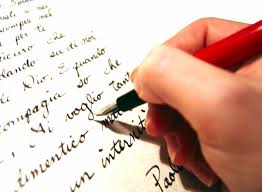 Compare this with paper letters. Each one incurred the price of the
envelope and the postage stamp, and although this doesn’t represent
a lot of money, these were in limited supply – if you ran out of
them, you’d have to make a special trip to the stationery store and
the post office to buy more, so you didn’t use them frivolously. The
sheer ease of sending emails has led to a change in manners, a
tendency to be less polite about what we ask of others. Many
professionals tell a similar story. One said, “A large proportion of
emails I receive are from people I barely know asking me to do
something for them that is outside what would normally be considered
the scope of my work or my relationship with them. Email somehow
apparently makes it OK to ask for things they would never ask by
phone, in person, or in snail mail”.
Compare this with paper letters. Each one incurred the price of the
envelope and the postage stamp, and although this doesn’t represent
a lot of money, these were in limited supply – if you ran out of
them, you’d have to make a special trip to the stationery store and
the post office to buy more, so you didn’t use them frivolously. The
sheer ease of sending emails has led to a change in manners, a
tendency to be less polite about what we ask of others. Many
professionals tell a similar story. One said, “A large proportion of
emails I receive are from people I barely know asking me to do
something for them that is outside what would normally be considered
the scope of my work or my relationship with them. Email somehow
apparently makes it OK to ask for things they would never ask by
phone, in person, or in snail mail”.
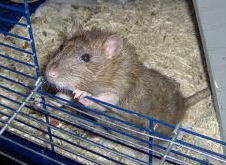 liked it so much that they did nothing else. They forgot all about
eating and sleeping. Long after they were hungry, they ignored tasty
food if they had a chance to press that little chrome bar; they even
ignored the opportunity for sex. The rats just pressed the lever
over and over again, until they died of starvation and exhaustion.
Does that remind you of anything? A 30-year-old man died in
Guangzhou (China) after playing video games continuously for three
days. Another man died in Daegu (Korea) after playing video games
almost continuously for 50 hours, stopped only by his going into
cardiac arrest.
liked it so much that they did nothing else. They forgot all about
eating and sleeping. Long after they were hungry, they ignored tasty
food if they had a chance to press that little chrome bar; they even
ignored the opportunity for sex. The rats just pressed the lever
over and over again, until they died of starvation and exhaustion.
Does that remind you of anything? A 30-year-old man died in
Guangzhou (China) after playing video games continuously for three
days. Another man died in Daegu (Korea) after playing video games
almost continuously for 50 hours, stopped only by his going into
cardiac arrest.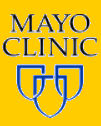

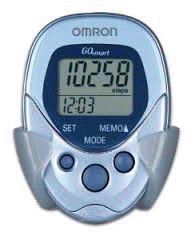 numbers in a walking journal or log them in a spreadsheet or a
physical activity app. Another option is to use an electronic device
—such as a pedometer — to calculate steps and distance.
numbers in a walking journal or log them in a spreadsheet or a
physical activity app. Another option is to use an electronic device
—such as a pedometer — to calculate steps and distance. 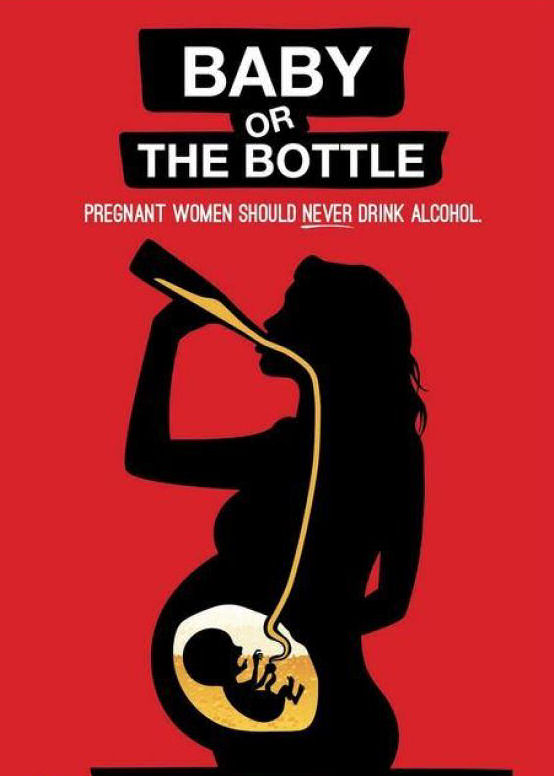

 stun. At Australian abattoirs, the aim is to ensure that
reversible stunning is done in a way that depth of unconsciousness
is sufficient to allow for the animal to bleed out and die before
there is a chance of regaining consciousness.
stun. At Australian abattoirs, the aim is to ensure that
reversible stunning is done in a way that depth of unconsciousness
is sufficient to allow for the animal to bleed out and die before
there is a chance of regaining consciousness.